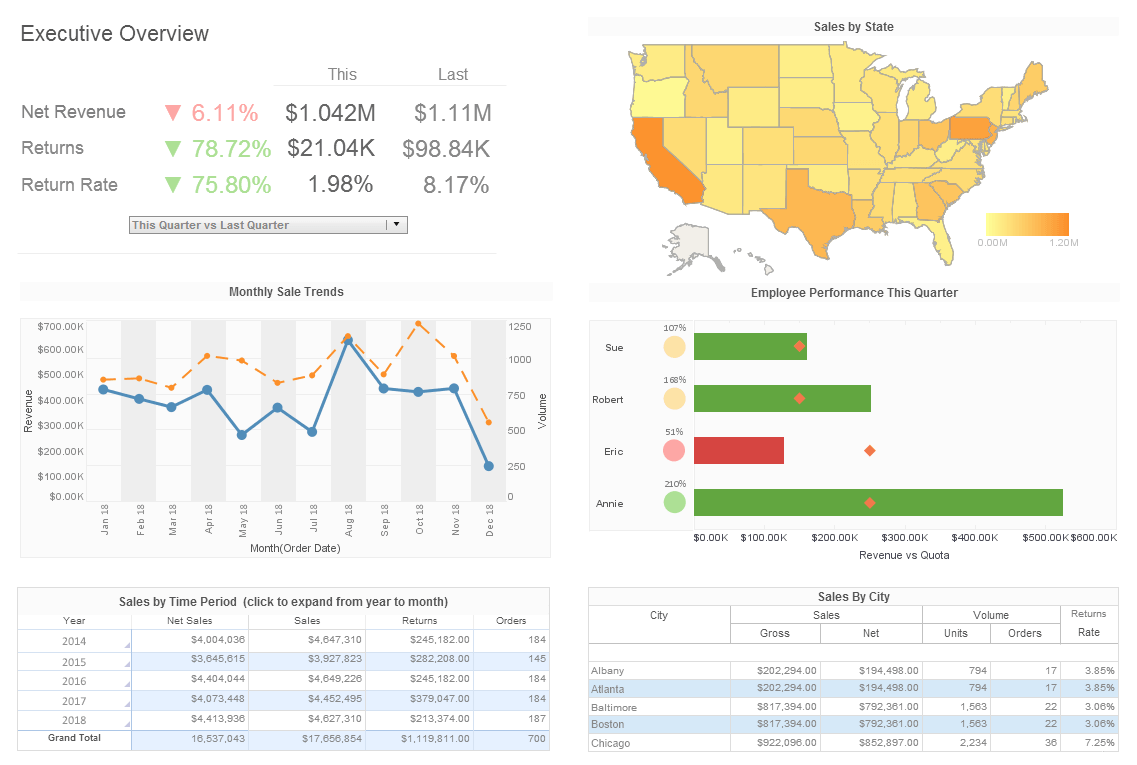InetSoft Webinar: New Performance Management Tool Environment
This is the continuation of the transcript of a Webinar entitled, "Infrastructure Optimization Scorecards” hosted by InetSoft. The speaker is Jessica Little, Marketing Manager at InetSoft.
In the real world though, we have to change our behavior and our design interactions. We need a new performance management tool environment. I also found out that every time I went in, I hear the same questions over and over again. We have built siloed organizations. We have stovepipes. We need to improve our network. These are just common areas we need to have built out.
Maybe you might not have it, but because I’m around IT, some of the organizations in the ‘80s had all client server systems and you had an organization with 400 client server systems out there where none of them talked to each other. They now all have security problems.
You also have to worry today about what I call continuous operations. Most of these organizations, after 9/11 and hurricane Katrina, worry about how the things operate. You have to measure these things and say these are my infrastructure measurements. Afterwards you have to go, I want to connect things together and have a more service oriented environment. I want to collaborate, and I want to share data. So I kept hearing these things.
What I did was say, well, I need to have a generic transformation plan and the generic outcomes. This is more of a case study. How do you present something if you just start measuring but you don’t have the target goal you are measuring and hoping? So I laid out a transformation plan and have done this a number of times. It starts by figuring out what you want to do. Most of the places have to go into the next level block by enhancing service.
When things aren’t integrated together, I normally go in there and say, you really have some problems. We probably have to fix some. It’s like a patient. You know you need to lose about 10 pounds, but you have to take care of one thing or another thing before we fix that. The bottom line is, we need to do a few other things.
So you need to do that. You want to eventually get connected with more collaboration, and you want to be alerted anytime, anywhere, and across the organization try to break down the stovepipes. What I would recommend often is to have a color coded roadmap where different people have taken variations of it and put them in posters and then someone goes and explains what’s going to be done with the results and measures the outputs.
Now there are staffers on the hill in congress that will say I want some measures, or I want a roadmap. I don’t think they know what they want, but that’s what they are getting. Still, the problem is how you translate that into a business driven approach methodology.
In regards to what I am doing, which I won’t go through in detail of how I am using the dashboarding software, I will show you a few slides of that which explains the idea that you have to have a scorecard of what your performance outcome would be at a certain level. What if you are at that level? What will the answers to questions be about the performance outcome, how many forms can you deal with?
In the business world, companies are going to change the way they are doing business. How do you build enough infrastructure and figure out what the scorecard, what the tracking mechanism is and see the results and impact?
How a Congressional Staff Office Used StyleBI to Build a Scorecard
A congressional staff office faces the ongoing challenge of turning vast amounts of legislative, financial, and constituent data into actionable insights for decision-makers. Traditional reporting methods often result in static spreadsheets or lengthy documents that do not adapt quickly to the fluid nature of policy work. By adopting StyleBI, the staff office gains the ability to build an interactive scorecard that consolidates performance indicators across multiple domains—legislative progress, constituent services, budget utilization, and outreach effectiveness—into a single, easy-to-navigate platform.
With StyleBI’s scorecard capabilities, the office can track bill sponsorships, committee activity, and voting alignment with policy priorities in real time. Metrics can be drilled down by topic area, legislative chamber, or even by collaboration with other members of Congress. This level of granularity helps staff evaluate whether the office is meeting its legislative goals while also identifying areas where efforts may be lagging. Instead of waiting for periodic reports, decision-makers have a live dashboard that reflects the most current state of affairs.
Constituent service is another domain where the scorecard proves invaluable. The office can integrate case management data, correspondence volume, and response times into the StyleBI platform. By doing so, staff can see whether constituent needs are being addressed efficiently and fairly, while also tracking trends in citizen concerns by region or issue. This information supports a more responsive approach to public service, ensuring that the office stays aligned with the evolving priorities of the people it represents.
Budget management and outreach efforts also become more transparent when included in the scorecard. StyleBI enables the office to visualize spending across categories, monitor the allocation of resources to district events, and measure the effectiveness of communication strategies. This comprehensive view helps the office strike a balance between legislative activity, constituent engagement, and fiscal responsibility. Ultimately, the scorecard built with StyleBI empowers congressional staff to operate with greater accountability, agility, and data-driven precision in a highly complex political environment.


